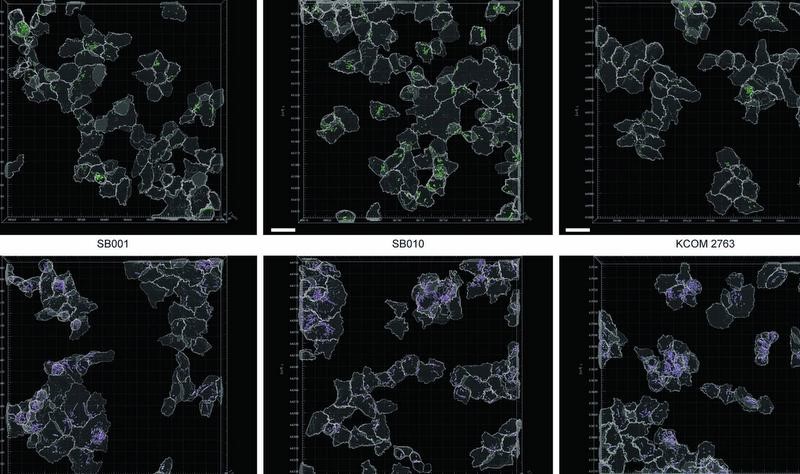Description

Source: Hindu
Disclaimer: Copyright infringement not intended.
Context
- Fusobacterium nucleatum, typically residing in the human mouth, has emerged as a significant player in colorectal cancer (CRC) pathogenesis.
- Recent studies have shed light on its genetic variants and mechanisms that contribute to CRC development, providing valuable insights into potential diagnostic and therapeutic strategies.
Details
Genetic Variants and CRC Association
- Researchers at the Fred Hutchinson Cancer Center identified a distinct subtype of Fusobacterium nucleatum significantly associated with CRC tumours.
- Through genomic mapping of isolates from CRC tumours, they revealed Fusobacterium nucleatum animalis (Fna) as the predominant subtype linked to CRC, suggesting genetic factors influencing its association with cancerous tissues.
- Two distinct clades, Fna C1 and Fna C2, were identified, with Fna C2 showing a higher association with CRC tumours.
- Physically, Fna C2 bacteria exhibited elongated and slender morphology compared to Fna C1, potentially affecting their interaction with host tissues and immune evasion.
- Genomic analysis revealed metabolic differences, with Fna C2 possessing genes for metabolizing ethanolamine and 1,2-propanediol, key nutrients abundant in the gut microenvironment.
- Enhanced nutrient scavenging capabilities of Fna C2 contribute to its preferential colonization and proliferation in CRC tumours.
Fusobacterium nucleatum
- Fusobacterium nucleatum is a gram-negative anaerobic bacterium found in the oral cavity, gastrointestinal tract, and other mucosal surfaces of humans.
- Initially identified as a common oral commensal, its role as a pathogen has gained significant attention due to its association with various oral and systemic diseases.
Taxonomy:
- Fusobacterium nucleatum belongs to the Fusobacterium genus within the Fusobacteriaceae family.
- Morphologically, it appears as gram-negative, non-spore-forming, anaerobic bacilli with pointed ends, typically arranged in chains or clusters.
- Its characteristic fusiform shape gives rise to the genus name Fusobacterium.
Metabolism:
- It is an obligate anaerobe, meaning it thrives in environments devoid of oxygen.
- Metabolically, it is saccharolytic, meaning it ferments sugars to produce energy.
- Fusobacterium nucleatum exhibits pathogenic potential through various virulence factors, including adhesins, invasins, and toxins.

Role in Oral Health:
Periodontal Diseases:
- Fusobacterium nucleatum is one of the key pathogens implicated in periodontal diseases such as gingivitis and periodontitis.
- It forms biofilms in the periodontal pockets and contributes to tissue destruction through its virulence factors.
Endodontic Infections:
- Fusobacterium nucleatum is also associated with endodontic infections, particularly in cases of apical periodontitis and root canal infections.
Association with Systemic Diseases:
Colorectal Cancer:
- Studies have shown an association between Fusobacterium nucleatum abundance in colorectal tumors and the development of colorectal cancer.
- It is hypothesized that Fusobacterium nucleatum promotes tumorigenesis through inflammation and immune modulation.
Adverse Pregnancy Outcomes:
- Elevated levels of Fusobacterium nucleatum in the oral cavity have been linked to adverse pregnancy outcomes such as preterm birth and low birth weight.
- The bacterium may translocate from the oral cavity to the placenta, triggering inflammatory responses.
Diagnosis and Treatment:
- Laboratory diagnosis of Fusobacterium nucleatum involves microbial culture, molecular techniques (e.g., PCR), and immunological assays.
- Treatment strategies for Fusobacterium nucleatum-associated infections typically involve antimicrobial therapy targeting anaerobic bacteria, along with adjunctive measures such as mechanical debridement and surgical intervention.
Sources:
IndianExpress
|
PRACTICE QUESTION
Q. Discuss the significance of pathogens in human health, highlighting their role in disease transmission, host-pathogen interactions, and the challenges they pose to public health systems. Provide examples of notable pathogens and strategies employed for their control and management. (250 words)
|
















